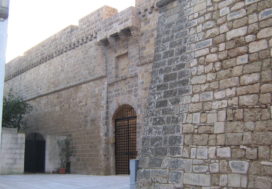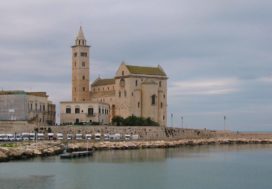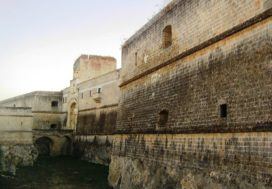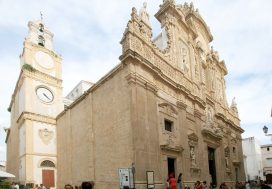By deciding to stay at the Bio Masseria Santa Lucia in Alessano, near Capo di Leuca, in Salento, you will be able to travel, discovering the history of the cities of Salento.
Medieval village and Castle of Specchia
Specchia is one of the most characteristic medieval villages of Salento, with its Castello Risolo located in the historic center. It is a building that dates back to the 16th century with elegant balustrades and a rusticated portal surmounted by the noble coat of arms. From a fortified structure, in the 18th century it became a stately home.
Church of Sant’Eufemia
The Church of Sant’Eufemia is also worth a visit in the town of Specchia. It is located near a Roman and Renaissance settlement called Grassano. The church features a longitudinal plan and a polygonal apse on the outside, while it is semicircular on the inside. For the construction of the same have been reused ashlars and columns in Lecce stone derived from the hamlet of Grassano. At the entrance there is a door surmounted by a round arch, above which there is a window, divided by a column, which presents a truncated pyramidal capital which is adorned with a cross inserted in a circle. On the inside the church has three naves, and a very distinctive altar in Lecce stone.
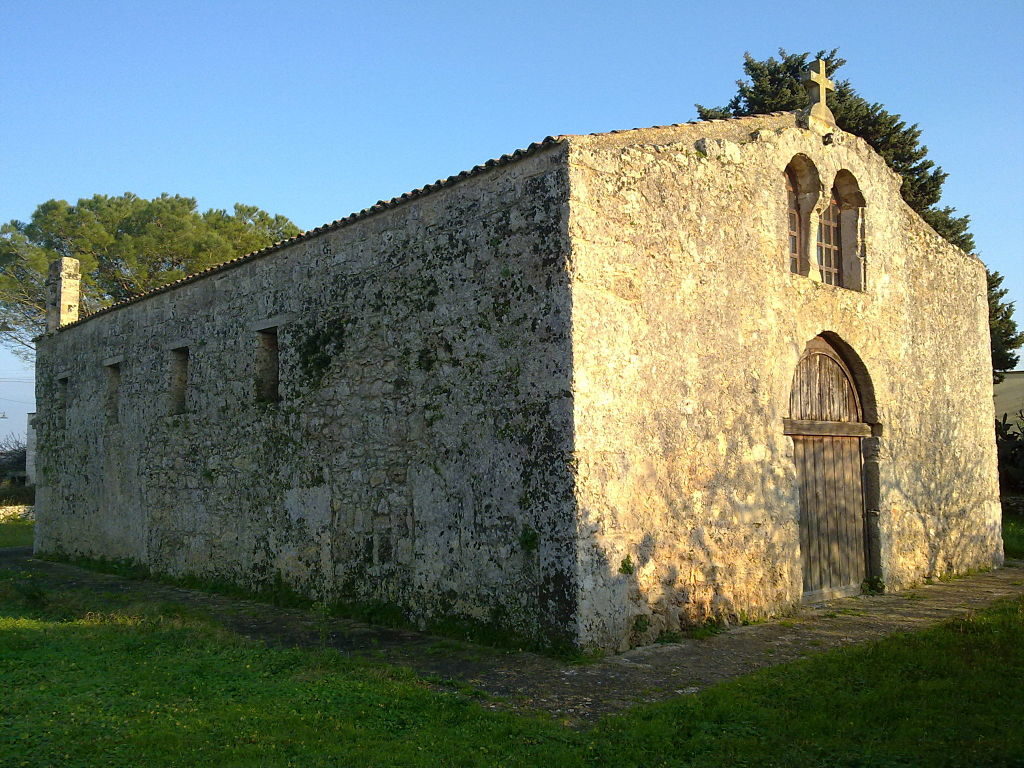
Church of Sant’Eufemia, Specchia
Galatina
Basilica of St. Catherine of Alexandria
In the city of Galatina there is the interesting Basilica of St. Catherine of Alexandria which houses different styles: Gothic, Norman and Byzantine. The portal and the rose window seem to be embroidered, due to the fine decorations that characterize them. It houses several frescoes: angels, music, eighteenth-century frescoes and arabesque ceilings.
Otranto
Cathedral and Aragonese Castle
At the highest point of the city of Otranto lies the majestic Cathedral, whose facade presents different styles: Gothic, Byzantine and Aragonese. Inside, let yourself be charmed by the floor that features a mosaic floor, made with the limestone of the place. Further on you will come across the Aragonese Castle, built in the Renaissance period. Today it hosts exhibitions and cultural events.
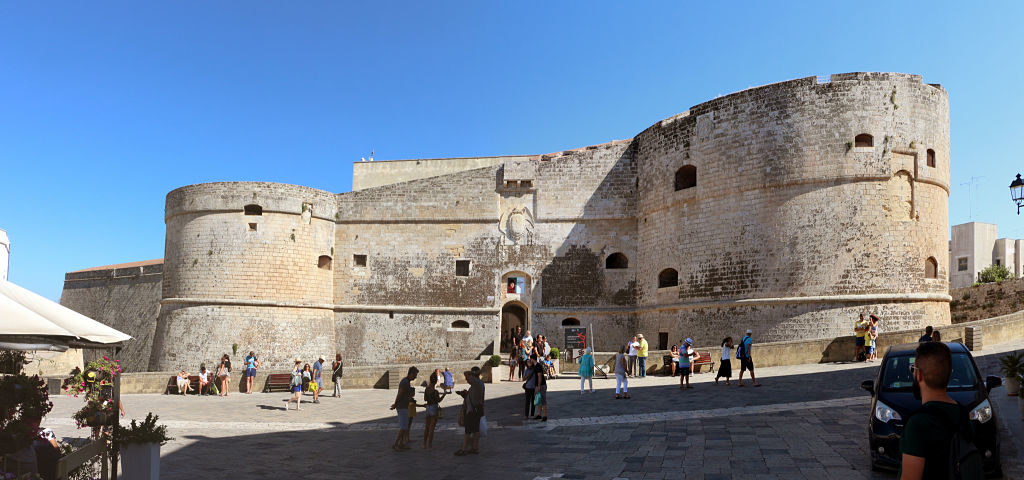
Aragonese Castle, Otranto
Porta Alfonsina
The Porta Alfonsina was built to pay homage to Duke Alfonso of Aragon, who in 1480 freed the city from the Turkish invasion. Its purpose was to facilitate the tossing of boiling liquid, against all those who wanted to invade the city. It is the gateway to the historic center of Otranto, and is located on the walls which presents a polygonal shape. The Porta Alfonsina has been equipped with two towers built for defensive purposes: Ippolita and Duchessa.
Crypt of St. Nicholas
The Crypt of St. Nicholas is located in the Valley of Memories, a small rock complex, where religious ceremonies are still held to revitalize the history of those places.



